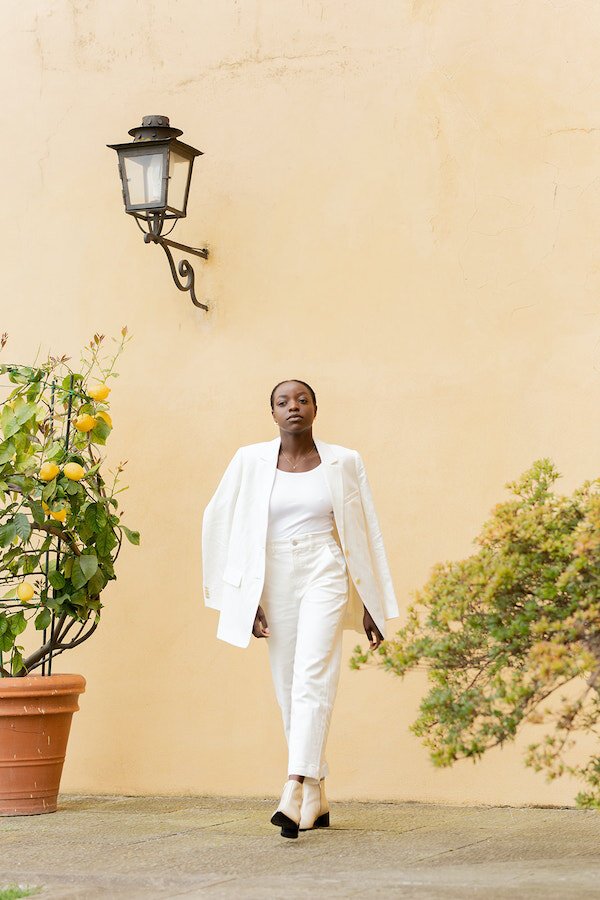
Are You An Introvert Or An Extrovert? Here’s How To Tell
When you find yourself at a dinner party, what role do you play? Do you like being the center of attention, or would you rather sit back and watch the social interactions around you? Now think about other situations—a work meeting, a family function, a date. Maybe after a work meeting, you feel drained and want nothing more than to be alone. But maybe after dinner with some friends, you feel excited, energized even. How do you act in these different situations, and how do you feel when they’re over?
“The energy you have after a social interaction has long been the determining factor for whether you’re introverted or extroverted.”
The energy you have after a social interaction has long been the determining factor for whether you’re introverted or extroverted, as first introduced by Swiss psychologist Carl Jung in 1921. In Psychologische Typen (Psychological Types), he wrote that introversion in personalities is marked by reserved and reflective behavior, and extroversion is manifested in outgoing, social behaviors.
Which personality type someone is, said Jung, depends on where they get their energy. In general, introverts feel their energy levels drained after social interaction, while extroverts feel charged up by spending time with others or being in a crowd.
Importantly, Jung noted that introversion and extroversion exist on a spectrum and that most people don’t fall firmly into one category.
“Jung noted that introversion and extroversion exist on a spectrum and that most people don’t fall firmly into one category.”
“There is, finally, a third group,” writes Jung in Psychologische Typen, describing folks who are neither true extroverts nor true introverts but somewhere in between—a group that is “the most numerous and includes the less differentiated normal man.”
In 1923, psychologist Edmund Smith Conklin coined a term for this majority third group: ambiverts. According to Conklin, introverts and extroverts sit on either side of the spectrum, and most other people oscillate between both behaviors depending on the situation. The introvert to ambivert to extrovert spectrum looks like a bell curve, explains psychologist Dr. Todd Kashdan, author of The Art of Insubordination: How to Dissent and Defy Effectively, with the majority of folks falling in the middle, or ambivert part, of the spectrum.
“The thing about introversion is you don’t get the same dopaminergic hit of having the attentional spotlight directed toward you, and extroverts love that.”
One major difference between introverted and extroverted behavior, says Kashdan, is how much you enjoy having the spotlight in a given social situation. “The thing about introversion is you don’t get the same dopaminergic hit of having the attentional spotlight directed toward you,” he says, “and extroverts love that.”
So, while they’re not cut-and-dried ways to characterize someone’s personality, extroversion and introversion are both important ways to describe human interactions, dynamics, and different ways of responding to the same situation.
The Myers-Briggs personality type indicator heavily utilizes the introvert/extrovert binary. According to the Myers & Briggs Foundation, another way to think about personality indicators is where you prefer to spend your time—in your inner world or the outer world of people, places, and things.
Common Misconceptions
Appearances can be deceiving, and not everyone who falls toward either end of the spectrum looks like a typical introvert or extrovert. For example, most extroverts enjoy and benefit from time spent alone, even though they get more energy from other people and the world around them. Some extroverts might also come across as shy, says Kashdan, meaning “you like attention, but the runway is longer to get the plane up in the air.”
“Whenever I make new connections or acquaintances, for example, people are surprised to discover that I’m more introverted since I’m also social and energetic. ”
Conversely, someone who falls more toward the introverted side might genuinely enjoy a big party or a conversation with a stranger and still identify more with introversion if their energy is drained after socializing. Kashdan sees introverts act extroverted when they’re speaking on one of their interests or something they’re passionate about, noting that in any sort of one-on-one situation, it’s hard to tell whether someone is an introvert or extrovert.
Whenever I make new connections or acquaintances, for example, people are surprised to discover that I’m more introverted since I’m also social and energetic. And, like most of the population, I’m not a true introvert but rather an ambivert—I like making new connections and interacting positively with the world around me, but I like spending time in my head just as much.
Another useful concept is to see introversion and extroversion as a continuum—the more you have of one trait, the less you have of the other, but you always have at least a little of both. Or, think of it as being left or right-handed. While one hand is dominant, the other one is far from useless.
Why Does This Matter?
So, why do any of these labels matter? Since we’ve established what constitutes introversion and extroversion, plus the fluctuating nature of it all, labeling yourself isn’t important here—but knowing yourself is.
“Labeling yourself isn’t important here—but knowing yourself is.”
“There’s no real benefit to describing yourself as an introvert or extrovert,” says Kashdan, explaining that he prefers identifying the situations where he might act one way or the other.
Think back to the settings described at the outset of this article, plus any other situations you might find yourself in daily—with large groups of friends, small groups of friends, with a colleague, with new acquaintances, with your partner, a situation with a power imbalance, a romantic situation, etc. Which side of our personality is drawn out, the introverted or the extroverted side, largely depends on the place.
“When you know that a situation will drain you, you can prepare in advance.”
Knowing yourself, how you react in different settings, and what you need to function at your best is key here. When you know that a situation will drain you, you can prepare in advance and avoid scheduling activities back to back to alleviate the risk of burning yourself out. Identifying which settings might bring you energy is helpful, too—you’ll know when you can expect to have the most energy, and you can focus it accordingly.
Most importantly, don’t pigeonhole yourself. Identifying as strictly one type or the other can be a self-fulling prophecy. Even folks who are true introverts or true extroverts can exhibit both personality traits, and this attitude leads to the most fulfilling social experiences.
Natalie Gale is a Boston-based freelance journalist. When she’s not writing about art, food, or sustainability, you can find her biking to the farmers’ market, baking, sewing, or planning her next Halloween costume. Say hi on Instagram!





